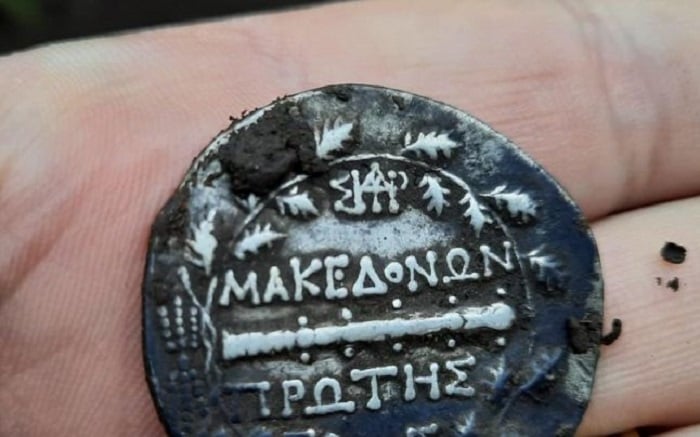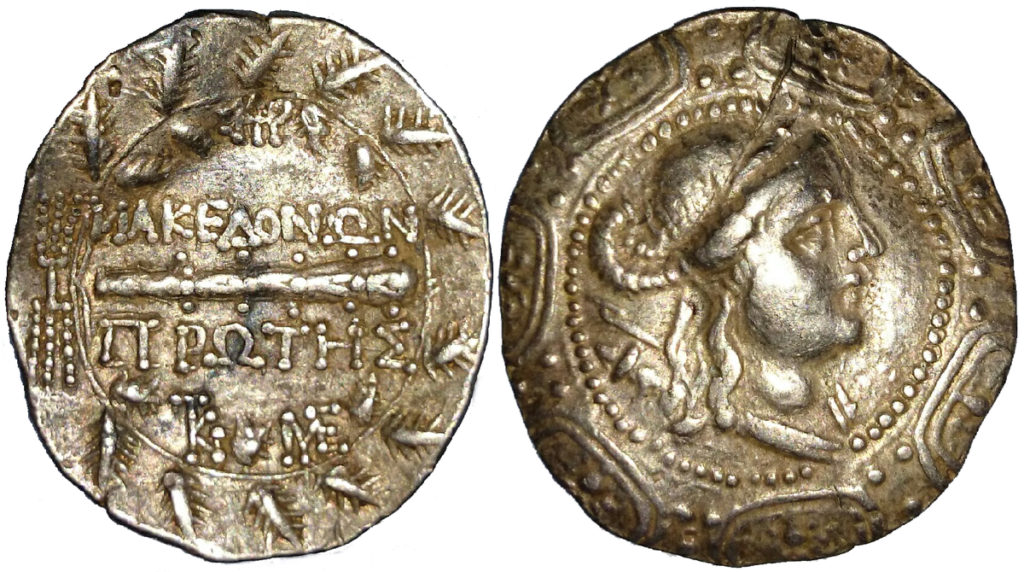
Dozens of ancient Macedonian Greek coins were discovered recently by a retired policeman in a village in southern Romania.
The haul of 68 coins was found with a metal detector near the village of Radomiresti, 140 kilometers (87 miles) west of Bucharest and and about 70 kilometers (44 miles) north of Bulgaria.
Police say the coins could be “a real treasure.” They appear to be very old, minted in the 2nd century BC according to the retired officer who found them.
Coin inscription: “First of the Macedonians”
The coins bear the inscription “Makedonon Protis” (Greek:Μακεδόνων Πρώτης), which, according to the British Museum, translates to: “of the First (Region) of the Macedonians.” On the same side, the coins are decorated with oak leaves while on the opposite, there’s a bust of the goddess Artemis.
Retired officer Paul Durca, who had a license to use a metal detector found the silver coins on land he owned and handed them over to the police department, Adevarul reported. They will be sent to the Culture Ministry to be authenticated and dated.
“After counting twenty-odd coins, I stopped and called the authorities,” the former officer said on Facebook, adding that going out with his metal detector was one of his hobbies.
“It’s a favorite pastime. Today on the 13th, the goddess of fortune and all the gods of fortune were with me. I dug up 68 coins from the 2nd century. Thank you Lord!” the finder wrote jubilantly.

Greek presence in Romania
The Greek presence in what is now Romania dates back to the colonies (apoikiai) and trade stations (emporia) founded in and around Dobruja beginning in the 7th century BC.
Starting with the Milesian colony at Istros, the process reached its height after Tomis was founded in the 5th century BC.
Although forever subject to the Dacian interference and easily disrupted by changes in the politics of neighbor tribal chieftains, the colonies prospered until they were briefly placed under the rule of King Burebista in the late 1st century BC.
Immediately afterwards, and throughout subsequent centuries, they were stripped of their privileges by their new Roman masters and followed the Empire into its many years of crises.
In the Middle Ages, the Greek-speaking Byzantine Empire was a living presence north of the Danube, maintaining a cultural hegemony over the lands virtually until its disappearance. For long periods, it exercised actual political dominance in the area of modern Dobruja (known to the Byzantines as Scythia Minor).
See all the latest news from Greece and the world at Greekreporter.com. Contact our newsroom to report an update or send your story, photos and videos. Follow GR on Google News and subscribe here to our daily email!



